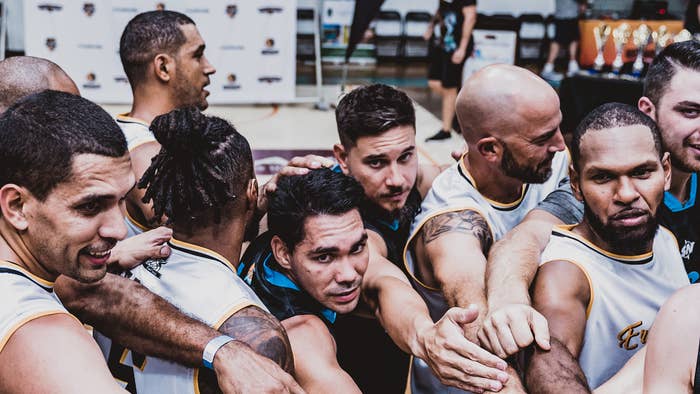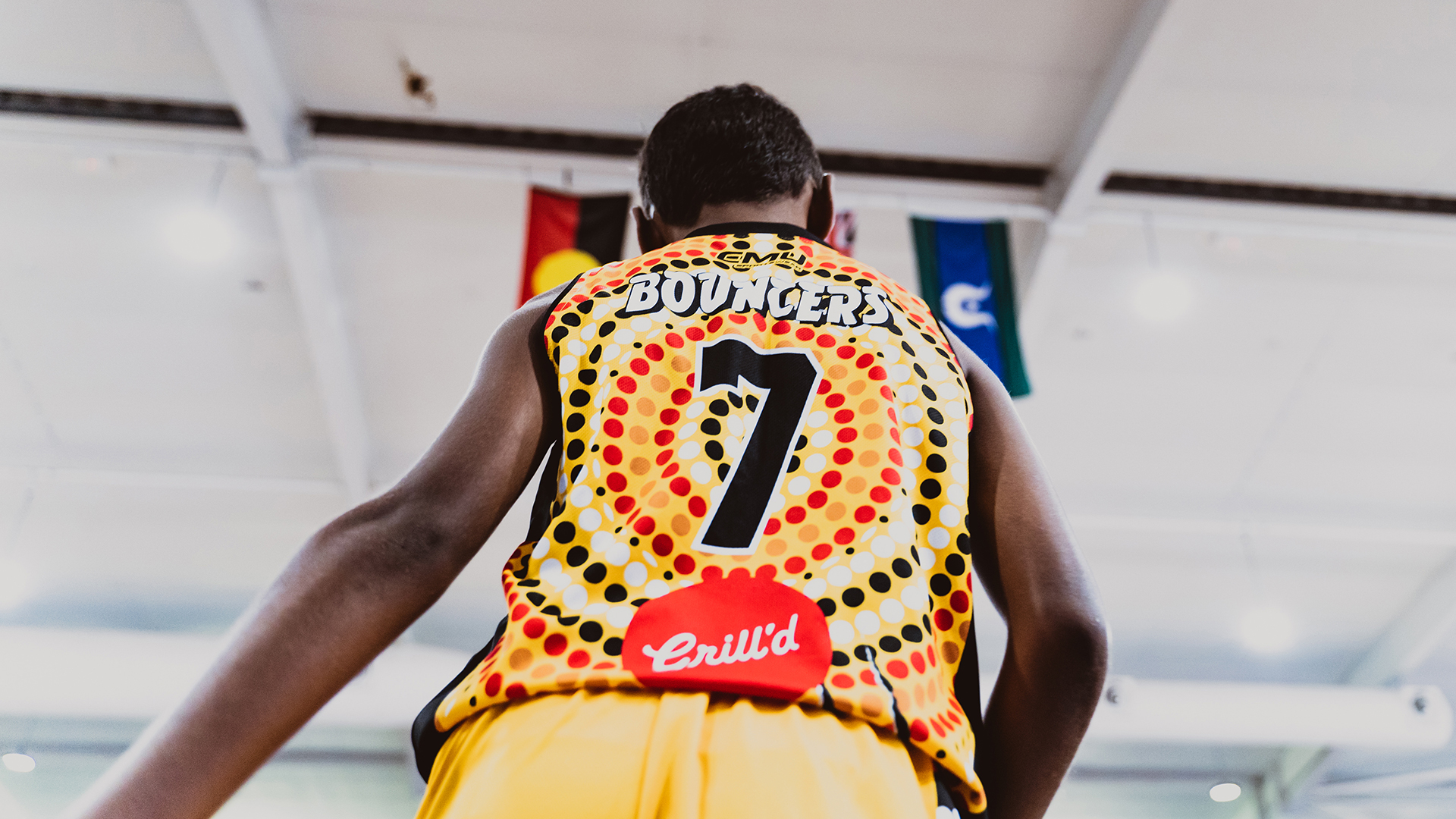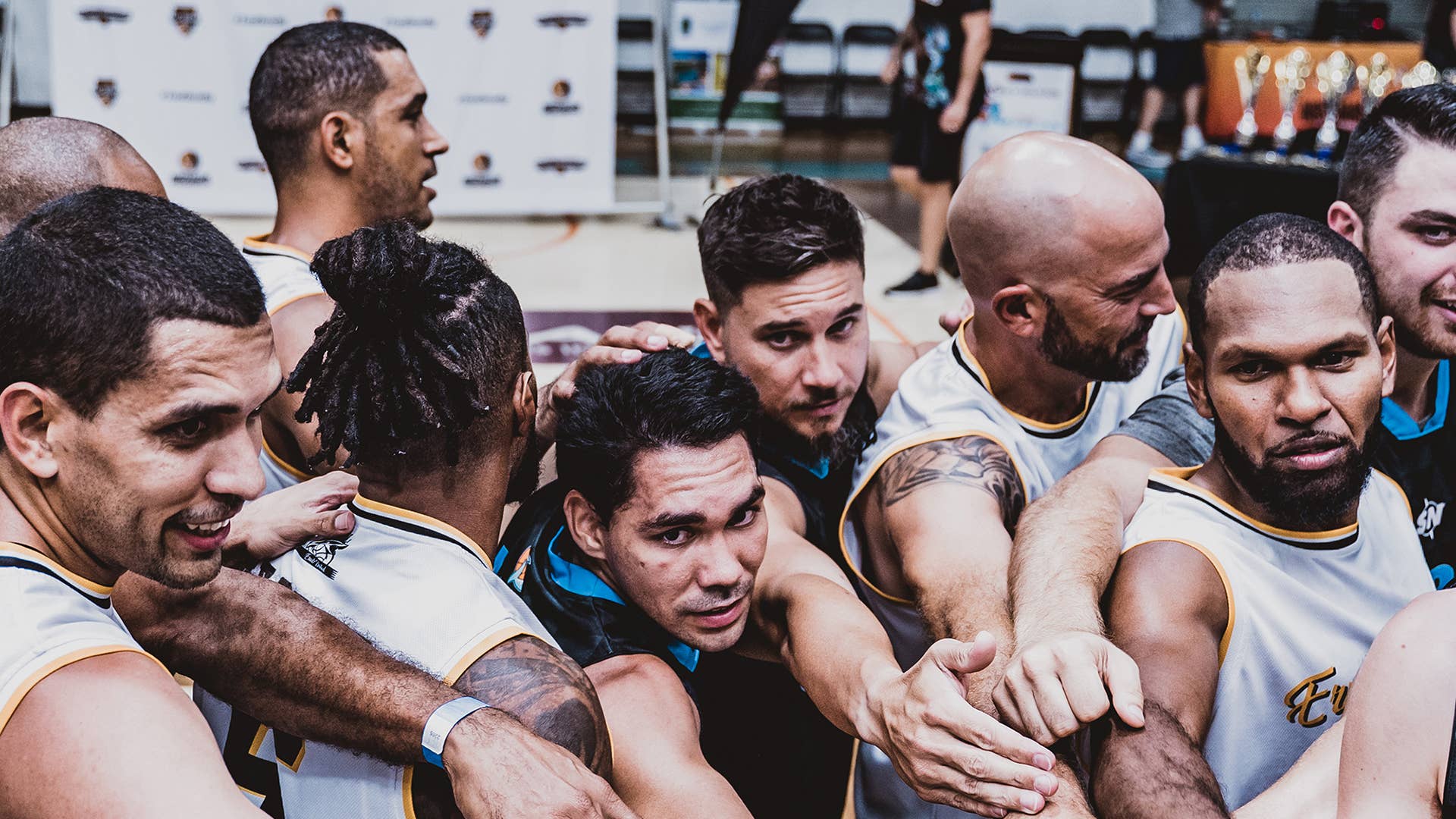
60 teams traveled from all over Australia, some clocking up hundreds of kilometres, to meet in Cairns for a celebration of culture and killer crossovers. Complex AU goes up north to document the untouched talent and untold stories unfolding as Australian Indigenous Basketball continues to rise.
This feature comes courtesy of Homecourt – a digital basketball publication with a unique perspective on the culture of basketball and the way it enriches lives, right across the world. More info at Homecourtmag.com
2019 was a landmark year for Indigenous basketball in Australia. On the back of years of work by trailblazers such as former NBL player and current Australian Indigenous Basketball (AIB) president Tyson Demos and, of course, Patty Mills, AIB has created countless opportunities for young ballers across the country. December 2019 punctuated a huge year for the group with the inaugural AIB National Tournament in Cairns.
The 2019 AIB National Tournament saw 60 teams and over 600 players from all over Australia take over Cairns to ball out across six divisions, from Under-14 boys and girls, all the way up to the fierce competition of the senior men and women. More than providing a platform for young men and women to play the game they love, the AIB Nationals was an opportunity to celebrate culture and identity, and come together as one mob.
It was a vibe.
To understand how we got here, we need to go back to 2014. Six years ago, a select group of Aboriginal and Torres Strait Islanders from around Australia came together and established the AIB All Stars. The team faced off against the New Zealand Maori National Team at the inaugural Trans-Tasman Basketball Series. The event made history, and created a platform for AIB to build off. The group continued to turn heads through the success of the AIB All Stars in 2015 and 2016, where the men’s representative team won back-to-back Trans-Tasman titles against the New Zealand Maori.
With the elite level thriving, AIB evolved to expand its focus to incorporate grassroots competition, and soon became recognised as the preeminent group representing Indigenous basketball in Australia.


The following day saw the grind that is a national tournament begin – young kids running up and down the court in organised confusion, women’s and men’s teams battling hard but also sharing a laugh with opponents, and the teenagers trying to be the hero of the tournament by putting their opponents on skates. What was almost tangible, however, was the sense of sportsmanship and respect amongst all – that this was about more than just basketball; and everyone in the building was part of something special.
“if people came over here and committed to Indigenous people in remote communities, you’ll have Olympians breaking records out here. Untouched talent, bro. But the problem is, nobody does it because it’s so remote. It’s so far, no one has time.” – Coach Atnas Maeko
The finals, as expected, lived up to expectations from a basketball standpoint, but also provided a platform for unity and a chance to celebrate culture. This was no more obvious when both senior men’s finalists, Erub United and the Cairns Black Marlins, huddled together as one following the game’s end. In the spirit of the tournament, the teams united and chanted, “One, two, three… balas!”
“Bala” is a word for brother throughout the Torres Strait Islands where Erub is located, and has been popularized in recent years by Patty Mills.
Erub United took home the trophy, but this detail seems insignificant.
What is more significant is how the tournament impacted the players and community at large. For people like Adam Desmond from Perth’s Binar organisation, it was about seeing different groups of Indigenous people given an opportunity to come together on and off the basketball court. Binar was by far the largest squad, entering seven teams into the tournament and rolling deep with around 80 people including players, coaches and family members. Desmond says that, for many of the Binar players, basketball is the most important thing in their life. It’s something that keeps them focused and on track. The AIB National Tournament was also the first opportunity for many to travel and experience things they hadn’t until now. Although a diverse group, Desmond acknowledges that the challenges faced by many are significant, including the loss of family members and the associated trauma that comes with this, and coming from environments where drugs and alcohol are prevalent.
“They just about become immune to the trauma because they’ve experienced it from such an early age,” Desmond explains. “So to see them getting up and doing the things that they do certainly inspires me. It is a much bigger thing than basketball.”
Binar, which now has almost 40 teams back in Perth, started from humble beginnings, with six players making up the first squad. Binar gave them an opportunity to play basketball – an opportunity that otherwise would not have been accessible due to the barriers faced by the community. Desmond and Binar quickly found these players were not alone, and the club quickly grew based on the demand that existed. Desmond hopes that the future of Binar lies in the hands of the players, who will one day be in a position to step up and take on more responsibilities. This is already happening as all coaches at the AIB National Tournament were 22 and under, with many of the senior team taking time to coach the junior squads.
Reflecting on this fact, Desmond says “seeing these guys grow as leaders, and not just as basketball players; I’ve got no doubt that that affected their personal preparations for their games, but they did put a lot of that to the side to help the younger kids, which I thought was amazing to watch.”


